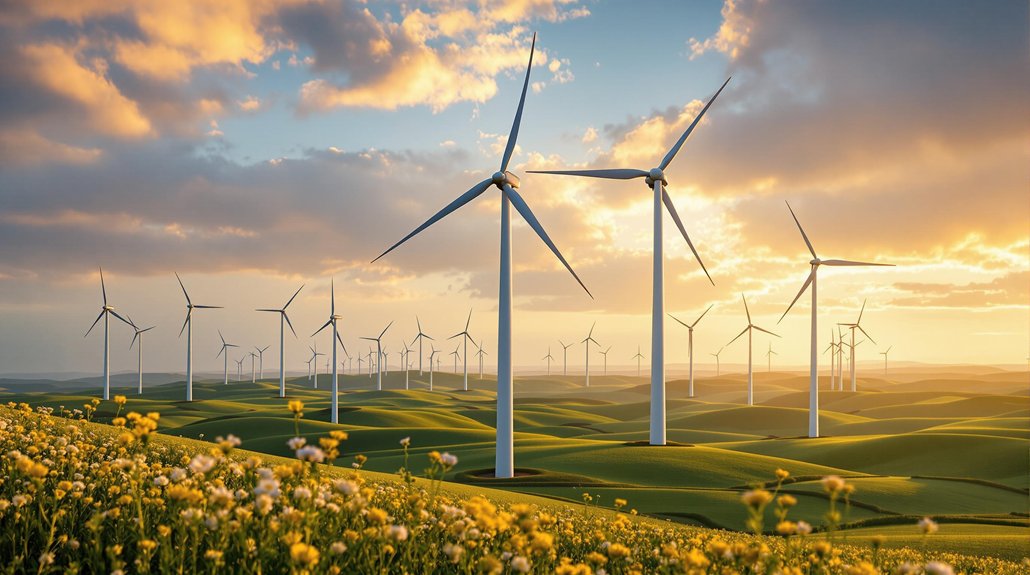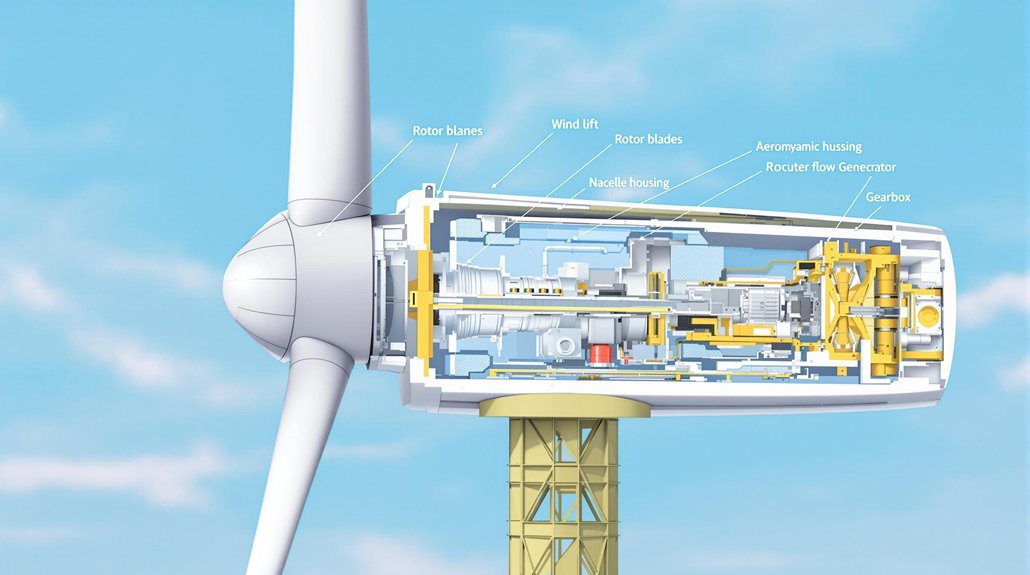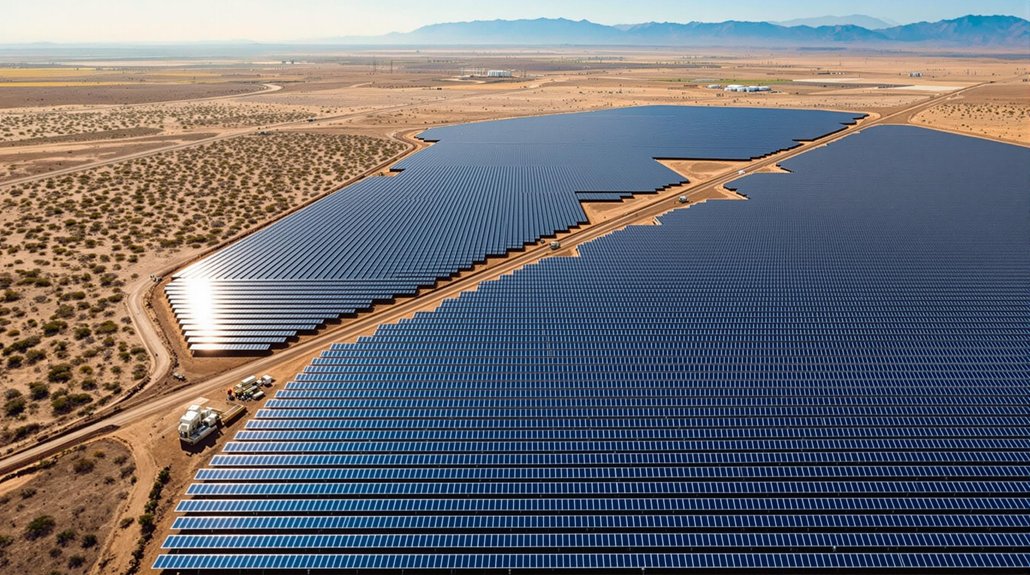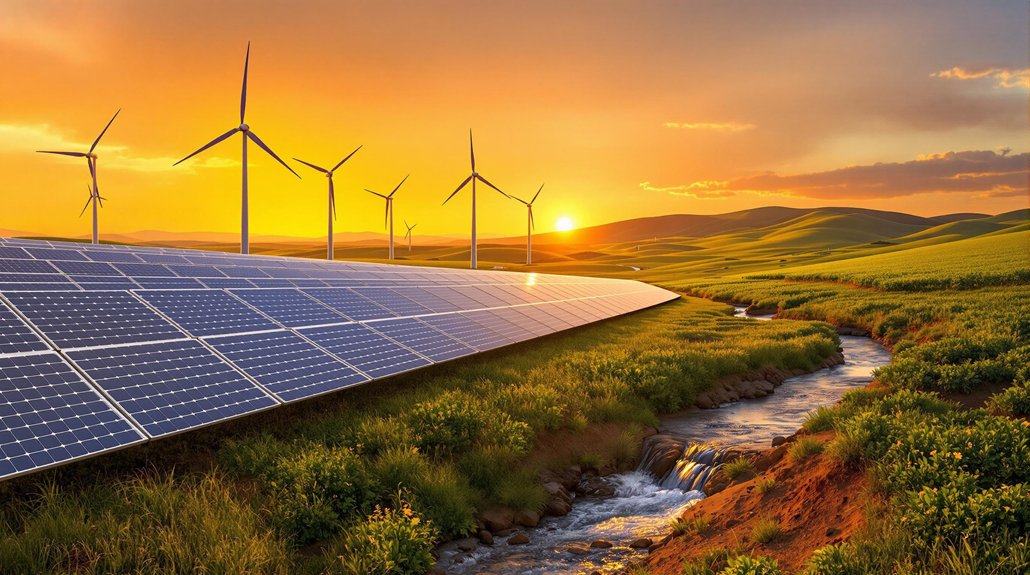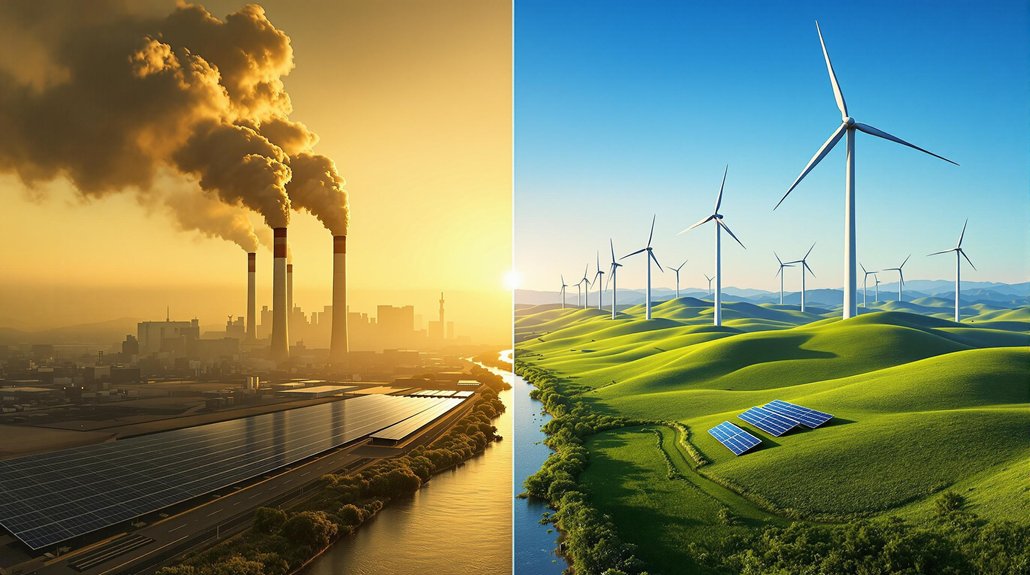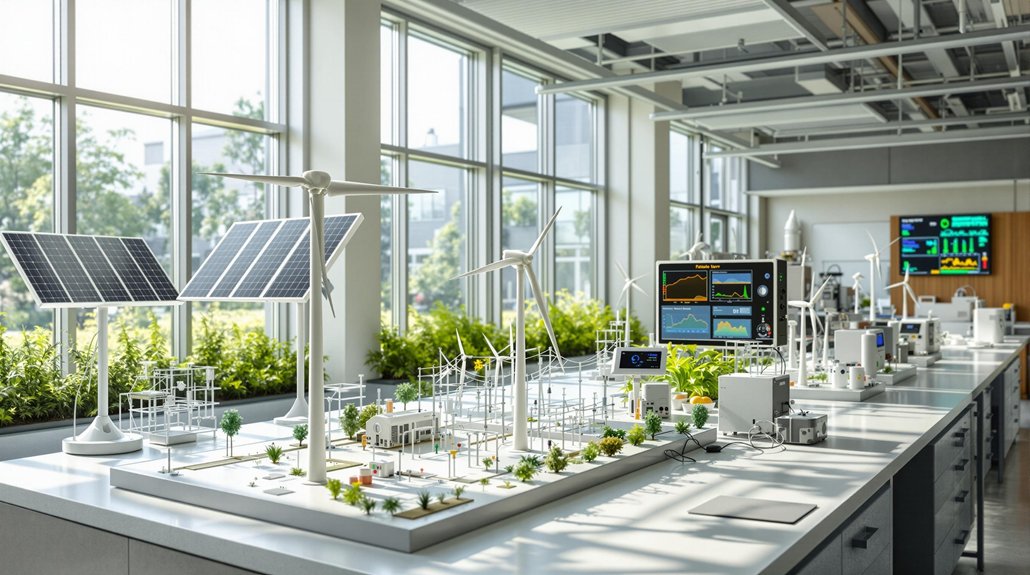Wind energy transforms moving air into clean electricity through modern turbines. It provides 10.1% of U.S. electricity, powering over 46 million homes. The industry employs 120,000+ American workers and added $20 billion to the economy in 2022. Wind turbines operate at wind speeds of 6-55 mph and produce zero carbon emissions during operation. The technology continues advancing, with ambitious goals to quadruple generation by 2030.
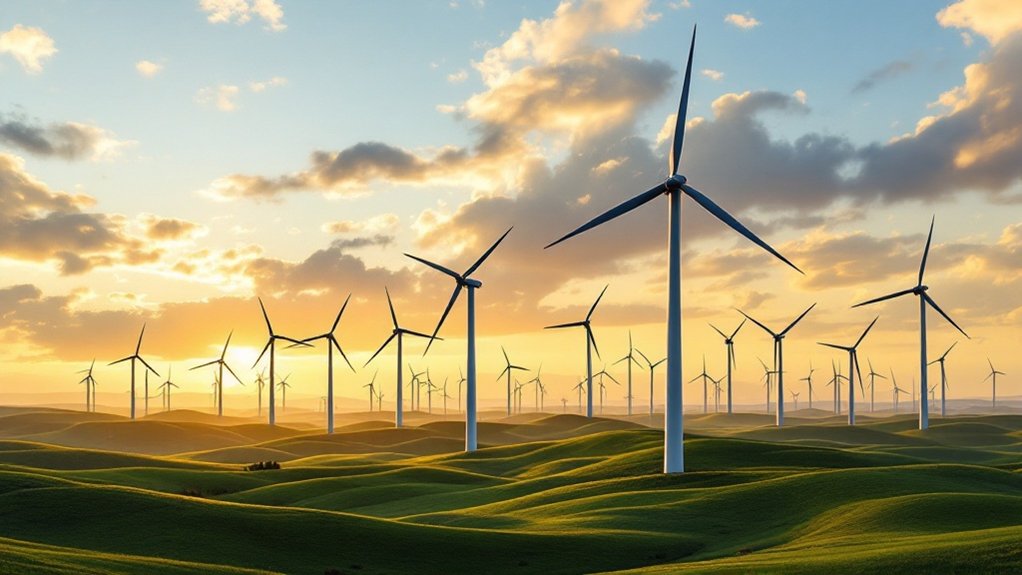
As the world seeks sustainable power options, wind energy has emerged as a leading renewable resource that’s both clean and increasingly affordable. This technology harnesses the kinetic energy of moving air to generate electricity through modern wind turbines.
These turbines begin producing power at wind speeds of 6-9 mph and automatically shut down when winds reach around 55 mph for safety reasons. Remarkably, wind turbines can generate usable electricity more than 90% of the time throughout the year.
Wind energy creates zero carbon emissions during operation. In 2019 alone, it saved 118 million tonnes of CO2 in Europe. The environmental benefits extend beyond carbon reduction, as wind energy’s water footprint is nearly zero compared to other electricity sources. The CO2 emissions from manufacturing turbines are typically paid back in less than a year of clean operation. Windmills have been capturing uneven heating patterns of the Earth’s surface for power generation for thousands of years.
Wind power: Zero carbon during operation with a carbon payback period of less than one year.
The economic impact of wind energy is substantial. The industry employs over 120,000 workers in the U.S. and added $20 billion to the U.S. economy in 2022 through new projects. Wind turbine technician ranks among the fastest-growing jobs in America. Wind energy provides additional income to farmers and ranchers who lease their land for turbine installations.
The industry delivers approximately $2 billion annually in state and local taxes plus land-lease payments to communities.
Global installed capacity of wind energy reached 733 GW by 2018, with China leading development in 2023. In the U.S., wind capacity grew from 45 GW in 2010 to 147 GW in 2023, providing 10.1% of U.S. electricity and serving the equivalent of more than 46 million American homes.
Modern turbines have grown dramatically in size and efficiency. Today’s models stand over 320 feet tall with blades averaging 210 feet long. Offshore turbines are even larger and can generate more power than their onshore counterparts. Wind turbines have a theoretical maximum efficiency of approximately 59% (Betz Limit), though typical energy extraction is around 50%.
While the technology faces challenges like wildlife impacts and intermittency, ongoing research addresses these issues. For wind to contribute to global net-zero goals, generation must quadruple by 2030, supported by record investments that reached $180 billion in 2023.
Frequently Asked Questions
How Does Wind Energy Impact Local Wildlife?
Wind energy impacts local wildlife in several ways.
Wind turbines can displace bird and bat species, with 63% of birds and 72% of bats affected. They cause bird deaths, particularly among small passerines, owls, and raptors.
Turbines fragment habitats, create noise that disrupts breeding patterns, and obstruct migration routes.
Offshore turbines affect marine life through noise and electromagnetic fields.
However, mitigation strategies like proper siting and curtailment can reduce these negative impacts.
What Happens When There’s No Wind?
When there’s no wind, turbines stop producing electricity. This is called a “wind drought.”
Power grids handle this challenge through several methods. Energy storage systems like batteries can release saved power. Backup sources such as natural gas plants increase generation. Expanded transmission networks bring electricity from windier regions. Modern forecasting helps grid operators prepare for calm periods. Wind farms spread across large areas reduce the impact of localized wind lulls.
Can I Install a Wind Turbine on My Property?
Installing a wind turbine on private property depends on several key factors.
Property owners need adequate wind resources, with average speeds of 9-13 mph minimum. Local zoning laws and permits are required, and homeowners’ associations may have restrictions.
Typically, at least one acre of land is needed, with turbines positioned 30 feet above nearby obstructions.
Grid connection requires utility approval, while off-grid systems need battery storage.
How Long Do Wind Turbines Last?
Modern wind turbines typically last 20-30 years. Most are designed with a 25-year service life in mind.
While foundations and towers can last the full lifespan, some parts need earlier replacement. Gearboxes, generators, and blades may require repairs before the turbine’s retirement. Inverters often need replacement after 10-15 years.
Regular maintenance can extend a turbine’s operational life. Environmental conditions also affect longevity.
What Are the Job Opportunities in Wind Energy?
The wind energy industry offers diverse job opportunities.
Wind turbine technician is the fastest growing occupation in the US, with 60% projected growth through 2033. The field includes manufacturing jobs (23,000+), construction positions (45,000+), engineering roles, and management positions.
Technicians earn about $61,770 annually. Manufacturing jobs concentrate in the Midwest, Great Lakes, and Southeast regions.
Most technical positions require postsecondary education, while engineering roles typically need bachelor’s degrees.
